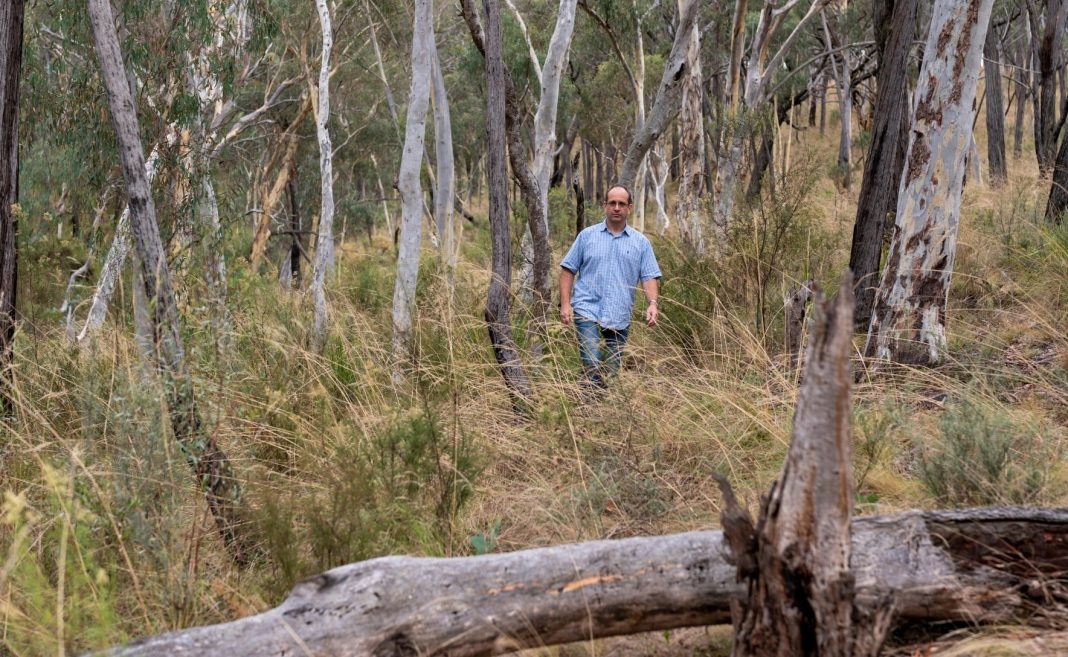2023 was a “year of opposites” for Australia’s environment, but despite conditions fluctuating between wet and dry, overall conditions remain stable following a bumper year in 2022, according to the latest Australia’s Environment Report, led by the Australian National University (ANU).
In 2023, Australia’s environment scored a 7.5 out of 10, a slight drop from 2022 when the country’s environment was given an 8.7 out of 10 – the highest ever score since 2011. The score combines data on the climate, water availability, and vegetation growth.
However, despite favourable environmental conditions, the list of threatened species increased sharply and populations of already listed species continued to decline, warns report lead author, ANU Professor Albert Van Dijk.
“For Australia, 2023 was a climate rollercoaster,” he said. “Globally, 2023 was the hottest year on record.
“The year started wet and relatively cool, but May 2023 brought a change to dry and unseasonably warm weather with an El Niño system developing. Despite this, environmental conditions across the country mostly remained good.
“The dry and warm weather led to an early start to the fire season, with several bushfires across Queensland and northern New South Wales between August and October, some of them with fatalities.
“Fears for a severe fire season in Australia did not come true because rainfall returned in November and El Niño’s influence waned in summer. Combined with relatively high temperatures, this made for a hot and humid summer.
“Unusually warm seas east of Australia contributed to Tropical Cyclone Jasper and several storms and floods in Queensland and Victoria, which caused significant damage to properties and livelihoods.
“Although the condition of the Great Barrier Reef remained stable in the first half of 2023, the impact of the high ocean temperatures, Cyclone Jasper, and river-borne sediments on the reef remains to be seen.”
Australia’s biodiversity took a significant hit in 2023. A record 130 species were added to the Threatened Species List in 2023, many more than the 29 species added annually on average over previous years. The researchers say this is mostly a delayed effect of the 2019/20 Black Summer bushfires.
“This brings the total number of threatened species in Australia to 2,098, a 47 per cent increase since 2000,” report co-author Tayla Lawrie, from the Terrestrial Ecosystem Research Network (TERN), said.
“Climate change was the major driver of new listings, threatening 87 per cent of newly listed and uplisted species. For the remaining 13 per cent of species, extinction risk factors included cane toad poisoning, habitat loss due to clearing and mining, myrtle rust, and water extraction.
“The greatest threats to Australia’s biodiversity are climate change, invasive species, and habitat destruction. Among invasive species, the continuing spread of cane toads in northern Australia and its impact on threatened species is concerning.”
Compared to 2022, environmental conditions declined in all Australian states and territories in 2023 except the Northern Territory, which scored the highest number out of everywhere in the country (8.8 out of 10) after experiencing its best rainfall and growth conditions in several years.
Western Australia’s environment scored the worst out of the country, with signs of drought developing in parts of the state, earning it a 5.5 out of 10. This is now the second year running that the condition of the state’s environment has declined.
Meanwhile, 2023 saw Earth record its highest temperatures ever seen in the atmosphere and the oceans, the least sea ice ever observed, and a rapid increase in sea level.
Despite 2023 being Earth’s hottest year on record, Australia bucked the trend. Worldwide, 77 countries broke temperature records, but Australia was not one of them. Even so, 2023 was Australia’s eighth-hottest year on record.
In 2023, greenhouse gas emissions in Australia increased for the first time in five years, mostly due to air travel resurging since COVID-19. Australia’s emissions per person are the 10th highest in the world and are more than three times those of the average global citizen.
Conducted annually, the report’s authors analyse vast amounts of satellite station and field measurements, combining the data into an overall environmental condition score for the country, as well as each state and territory.
Australia’s Environment Report is produced by ANU and TERN. The full report and score cards for individual regions are available online at https://ausenv.tern.org.au/.



